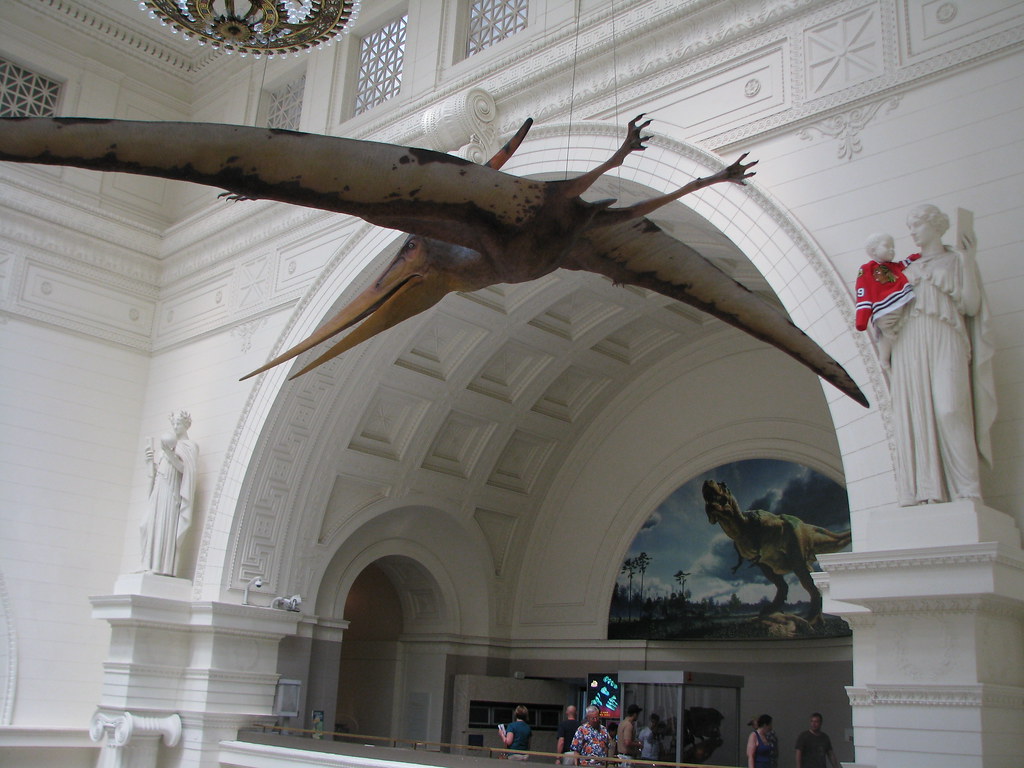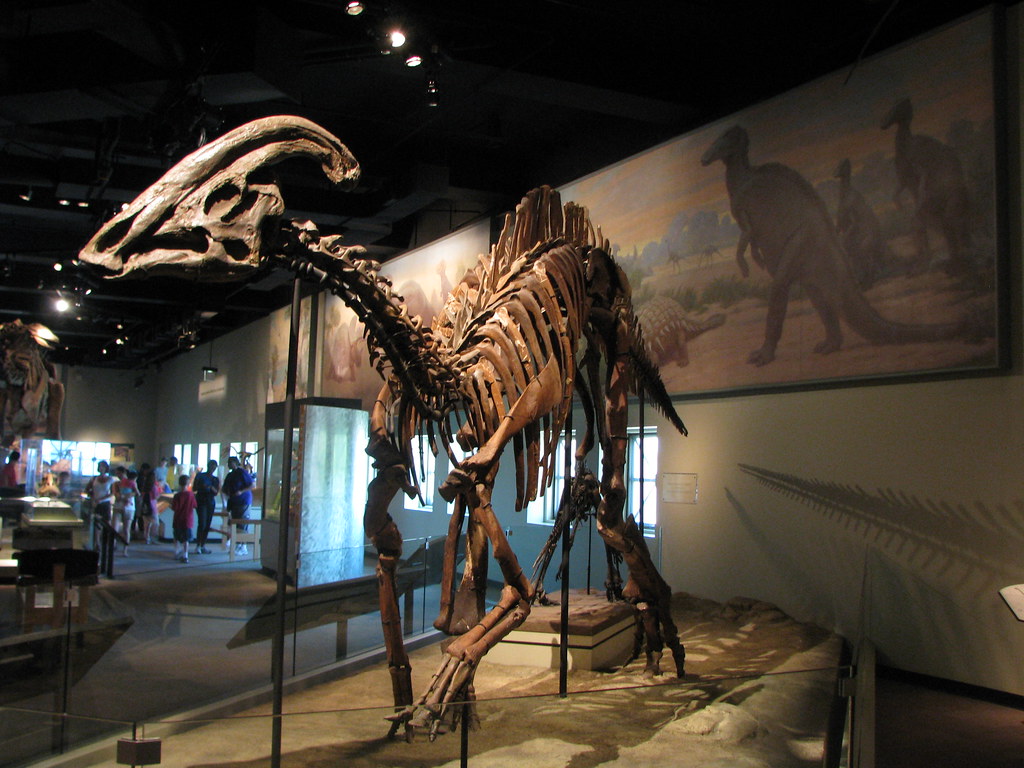Though I typically post these on the first, I'm running February's roundup a day early to make room for the launch of the 2017 Survey of Paleoartists tomorrow. Come back tomorrow to read about, and take, the survey!
In the News
Early in February, The Society of Vertebrate Paleontology spoke out against the Trump regime's hotly-debated immigration ban from nine majority-Muslim countries. Check out the full statement here.
Isaberrysaurus mollensis is a newly described primitive neornithischian from the Early Jurassic Los Molles Formation. Discovered with a belly full of cycad seeds, it was initially thought to occupy a more basal spot in ornithischia on account of its rather stegosaurian noggin. Read more from Franz Anthony at Earth Archives.
It barely missed the cut last month, so I'll include it this time. Saccorhytus coronarius is the newly discovered, 540 million year old contender for earliest deuterostome. As NPR's All Things Considered put it, S. coronarius was "basically a giant gaping mouth with spikes and some extra holes — probably for oozing waste." Sounds like I've got my Halloween costume figured out. Read more from Smithsonian, Phys Org, and CNN.
At Laelaps, Brian Switek introduces us to Keilhauia nui, a Jurassic ichthyosaur discovered in Svalbard, Norway and notable among its kin for the fact that its hips were preserved with it. Now we just need to enlist Weird Al to parody Shakira to make this story blow up.

Bulbasaurus phylloxyron is a new, gnarly-looking dicynodont from the Karoo basin of South Africa, described by Christian Kammerer in PeerJ. And there's a Pokémon connection, so it actually made the news! Read more from Everything Dinosaur, Shaena Montanari for Forbes, Jon Tennant for PloS Paleo Community, and Sarah Sloat for Inverse. Matt Celeskey's restoration, above, is a beauty.
Around the Dinoblogosphere
LITC's Asher Elbein has been a busy guy. First: his terrific piece for Audubon on how modern paleontology is harnessing the power of lasers to study fossils: in this case, research published in December on the early Cretaceous bird Confuciusornis, indicating it was capable of flight and adapted for arboreality. After that appetizer, dive into his new piece for the Bitter Southerner, in which he writes about the largely obscured history of the continent of Appalachia. Though many of the Mesozoic fossils of the eastern US are scrappy, Asher writes, "...put enough scraps together, and you can catch a glimpse of something more: the shape of a body, the shape of a forest, the shape of a land lost beneath fathomless time."Popular Mechanics ran a brief article on the Paleobiology Database Navigator, a tool that allows users to explore fossil localities by geological timeframe, taxa, or location. It's pretty great, check it out if you haven't already.
Thea Boodhoo tells the story of her involvement with the Institute for the Study of Mongolian Dinosaurs and lays out the background of the institute's mission to raise up a new generation of Mongolian paleontologists.
Learn about the fossils of Big Bend National Park from the Mary Anning's Revenge crew. It's like... maybe public lands are super-important and worth preserving? Is that a crazy, fringe idea these days?
Continuing the public lands theme, Robert Gay visits the PLoS Paleo Community blog to tell the story of Bears Ears National Monument's fossil treasures. I previously linked to a post on BENM in January, but it's too good a story to miss.
At Archosaur Musings, Dave Hone has launched a new series in which paleontologists discuss favorite or unsung scientific papers. He kicks it off with Mike Taylor, who writes about the process of publishing his paper with Matt Wedel on sauropod neck length.
"Scientist-led palaeoart should be the best there is," says Mark Witton, "carefully-executed, evidence-led syntheses of research conclusions in compelling artworks." So it's incredibly frustrating when paleoart commissioned by a scientist and created under their guidance fails in fundamental ways. Read Mark's full commentary at his blog.
There's a new paleontology-infused podcast in town: Common Descent.
Darren Naish shares a write-up of his talk at last autumn's Popularising Palaeontology event at King's College London. Head to Tet Zoo to read about his talk on paleoart memes. You can check out more about the workshop, including videos of the talks, at the Popularising Palaeontology website.
Jillian Noyes celebrates the enduring power of Disney's "Rite of Spring" segment of Fantasia at Extinct.
Did you know about Peru's Talara tar pits? Brian Switek waxes rhapsodic about their beautiful, jet-black bounty, as well as discussing some other tar pit sites that don't get the attention La Brea receives. In another post championing an unsung fossil, he gives some overdue love to Torvosaurus' smaller cousin Marshosaurus, a mid-sized Morrison predator only known from some bits of jaw and hip.
At Musings of a Clumsy Palaeontologist, Liz Martin-Silverstone is celebrating 150 years of Canadian paleontology, a rich history that kicked off with the discovery of a Dimetrodon on Prince Edward Island in 1845. Read her first post in the series here.
The Empty Wallets Club
Some juicy new books and art to pick up this month! I figure they're deserving of their very own section here. We'll see if there's enough every month to keep it around.
Anthony Martin's new book was released on February 7. Pick up The Evolution Underground to learn about the natural history of burrowing animals. Also check out Tony's post on the book at his Life Traces of the Georgia Coast blog.
If you haven't been to Chris DiPiazza's on-line store, do yourself a favor and check it out. I am particularly enamored of his successful effort to counter the "tiny arms" slander T. rex is prone to receive.
Some great stuff has been coming out from the 252MYA crew. Just a few recent pieces: Greer Strother's Hatzegopteryx poster. Franz Anthony's Ediacaran Biota tee. Julio Lacerda's Age of Fishes poster. I'll also note that 252MYA's licensing arm is now live, so there's literally no reason any media needs to resort to atrocious CG abominations instead of good paleoart.
Brian Engh is selling his paleoart book to Patreon supporters who pledge at the $20 per month level or higher, and if you commit to keeping that pledge level for at least two months, he'll draw a custom illustration of your choosing on the inside cover! And while you're here, dim the lights and check out Brian's second video dedicated to the dinosaur trackmakers of Copper Ridge. He also touches on gnarly injuries, the vital role of predators, the importance of public lands. Details on his book promotion at the end of the video.
It's not in the 252mya shop at the moment, but Gabriel Ugueto has added to his growing selection of Mesozoic fauna posters. Now available at Redbubble: Wessex dinosaurs and pterosaurs and one dedicated to the fauna of the Las Hoyas Formation of Spain. Dude's got a selfie next to the word "prolific" in the Merriam-Webster's.
Sharon Wegner-Larson released another great fossil-based design this month: Triceratops Rocks. Minerals, ginkgo leaves, and one of the coolest skulls of all time, what's not to love?
Emily Willoughby, Jonathan Kane, and Mike Keesey's new book God's Word or Human Reason?: An Inside Perspective on Creationism is now available. A limited number of signed hardcover copies are available from Emily for $40 through Paypal, too. The book, as you may guess from the subtitle, lays out evidence for evolution from a group of authors who were at one time creationists. Also, I had the distinct honor of designing the cover!
Crowdfunding Spotlight
More from Mike Keesey, why not? I love his comic Paleocene. Set in the devastated post K-T world, the opening chapter of the comic (he completed page 20 recently) has set the stage for a story about a clan of stem-primates as they struggle for survival. It even involves issues of class. I love the writing, the color, the atmosphere... it's just great. To support him in this and other endeavors, sign on to be a patron at his Patreon page.
A Moment of Paleoart Zen
I felt like going non-dinosaurian this time around, and this terrific new illustration by Vladimir Nikolov fit the bill perfectly. At Facebook, he offers this description:
An unfortunate individual of the aetosaurian species Stagonolepis robertsoni is falling to its death, while a nearby passing Ornithosuchus woodwardi is suddenly offered a free lunch. In nature, in great many occasions, someone's loss and pain is someone else's gain. The scene takes place during the Late Triassic in what is now Scotland.

You can check it out at DeviantArt and leave him a constructive comment, too.
That's a wrap for February. As ever, your comments and shares on social media are greatly appreciated. And seriously, come back tomorrow for the launch of the 2017 Survey of Paleoartists!



























